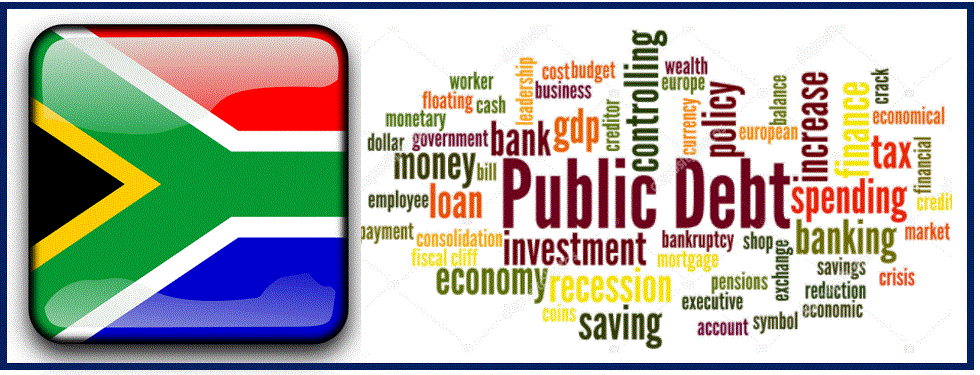As expected, Moody’s and Fitch further downgraded South Africa’s government debt last week. This now puts South African debt three places below official junk status at Fitch and two places below at Moody’s.

The straw that broke the camel’s back seems to Finance Minister Mboweni’s medium-term budget policy statement (MTBPS) last month. Despite offering an honest assessment of the country’s economic struggles, the MTBPS also included a R138-billion bailout for Eskom. The South African government argues that it has no choice, that Eskom is too big and too important to fail. Unfortunately, its impact on governmental finances is of similar size and importance: The ongoing support for the crumbling utility will push government debt to more than 80% of GDP by 2027/2028.
Trouble ahead
What is clear is that international investors see trouble ahead for South Africa. Two days after the government debt downgrade, Fitch followed up with a downgrade of the five major South African banks (Absa, FirstRand, Investec, Nedbank, and Standard Bank), citing their “significant sovereign exposure”. It seems that not only is Eskom going to cripple the government, but it is also going to take the private sector with it.
So, with storm-clouds ready to unleash on the country, and Covid-19 cases relentlessly climbing upwards once again, why is the Rand the best performing emerging market currency in the world? And is this performance sustainable? The answers are 1) little to do with South Africa and 2) probably not. But let us go into a bit more detail.
US elections and COVID-19 vaccine
Much of the Rand’s recent performance is down to two factors.
The first is result of the US election, the incoming Biden administration is likely to extend a much smaller domestic stimulus package than President Trump would have, weakening the outlook for corporate America. Biden is also seen as a steadier pair of hands than Trump, thus reducing overall risk and causing investors to shed some of their dollar holdings – the US dollar is a safe-haven currency and with Biden manning the ship, there is likely less need for safe-havens.
The overall effect is a dampening of investor appetite for US dollars, and almost every currency has gained against the dollar in recent weeks.
The second factor is the excellent news regarding Covid-19 vaccination efforts. With the Moderna, Pfizer and AstraZeneca vaccines all proving remarkably safe and effective, and all being fast-tracked for approval by governments around the world, there is finally light at the end of the pandemic tunnel. Investors who have been in a holding pattern for most of the year are loosening the purse strings and looking abroad to emerging markets once again.
An appetite for risk is back on the table. The result is that, despite the ever-junkier status of South African debt, investors have been snapping it up over the last month and are now net buyers in the region of 18 billion Rand.
Long-term economic outlook bleak
But is the status quo sustainable? Unfortunately, this is unlikely. While the market is currently happy to look to high-risk markets, this is mainly due to pent-up demand being unleashed. The underlying factors currently supporting the Rand are not of South Africa’s making, and the long-term economic outlook is bleak.
As the short-term appetite for riskier assets, like South African debt, wanes over the coming weeks and months, we should see return to normalcy. And the new normal for South Africa is a country struggling to deal with a mountain of debt and a badly wounded economy.
Many FSCA-regulated Forex brokers have reported a huge surge in support for the Rand in recent weeks as speculators have attempted to cash-in on the Rand’s rise, but the long-term positional traders are still holding firm in their short positions. While the jury is still out, and any attempt at certainty would be foolhardy given the events of the last year, the Rand’s future – much like South Africa’s – looks grim.
Interesting related article: “How can the global economy recover from the impact of COVID-19?”

